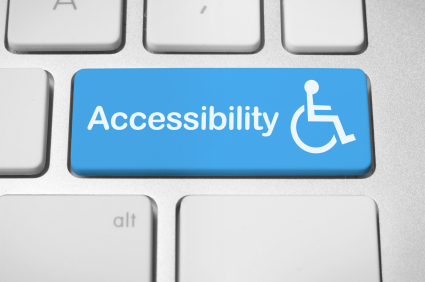In Mexico, efforts have begun to create legislative and administrative measures to guarantee inclusivity both in physical spaces and in digital platforms to access information in all government institutions.
On May 30, 2011, the General Law for the Inclusion of People with Disabilities was created, which states in its article 32 that:
People with disabilities have the right to freedom of expression and opinion; including the freedom to collect, receive and provide information through any form of communication that facilitates participation and integration on equal terms with the rest of the population. For these purposes, the competent authorities will establish, among others, the following measures:
- Provide in a timely manner and at no additional cost, information aimed at the general public, in accessible formats and with technologies appropriate to different types of disabilities;
- Promote the use of Mexican Sign Language, the Braille System, and other modes, means and formats of communication, as well as access to new information and communications systems and technologies, including the Internet;
- The institutions in charge of social services and programs regarding disabilities will provide the information and advice required to promote their development and social integration, and
- The media and private sector institutions that provide services and provide information to the general public will provide it in formats that are accessible and easy to understand for people with disabilities.
Likewise, on April 30, 2014, the National Program for Equality and Non-Discrimination 2014-2018 was published in the Official Gazette of the Federation, which establishes strategy 1.3:
1.3.4. Issue legal instruments to progressively establish the obligation to have accessible institutional web pages and electronic services.
On December 3, 2015, the Agreement was created that establishes the general web accessibility provisions that must be observed by the agencies and entities of the federal public administration and the productive companies of the state, which establishes the application of the most up-to-date international Accessibility elements of the W3C, specifically the WCAG AA Internet Content Accessibility Guidelines at a minimum.
Web Accessibility Initiative (WAI)
In the accessibility standards of the World Wide Web Consortium (W3C) they tell us about the importance of the term accessibility, which could be summarized as equal opportunities and access to people with temporary or permanent disabilities, regardless of their equipment, language. mobility or cognitive abilities. Perhaps we could further summarize the concept to, applications made for everyone.
By making the concept of accessibility clear, the WAI initiative attempts to bring web applications that meet the necessary standards so that the term can be applied and with this respond to the convention that access to technology is a basic human right, which is mentioned in the first part of this note.
To exemplify some points that we must consider when developing a web application, we can mention:
- Alt text for images. The alternative text will be available for those people with visual impairment who use screen readers who cannot understand the content of an image, but are also commonly used by some mobile browsers to save data transfer on mobile networks.
- Keyboard or mouse as input device. Not all users will be able to use the mouse or keyboard as devices to interact with the computer, for this reason navigation and data capture in web applications must provide a solution to more than one mode of interaction.
- Transcriptions for audio files. Just as alternative text for images is necessary for the visually impaired, alternative text is necessary for the hearing impaired.
These are examples that you will find in the 12 guidelines that the standard has, which are organized into 4 principles: perceptible, operable, understandable and robust. Each of them are evaluated to reach an implementation level classified as A, AA and AAA.
Now all that remains is to apply what you have learned. We share a couple of links where you can find broader explanations of the aforementioned concepts, reference guides and evaluation tools:
General explanation of the standard: https://www.w3.org/standards/webdesign/accessibility
Documentation of the initiative: https://www.w3.org/WAI/
Evaluation tool: https://www.w3.org/WAI/eval/report-tool/
Convention on persons with disabilities: http://www.un.org/disabilities/convention/conventionfull.shtml







